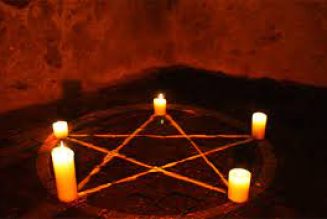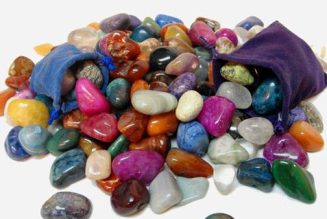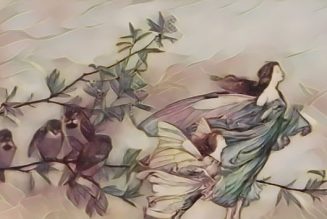Artemis is the Greek version of the classical moon-goddess, whom the Romans called Diana.Like the moon, she changes her form.Sometimes we see her as the ‘huntress chaste and fair’, the young girl, ever virgin, bearing the silver bow of the new moon.But at Ephesus, which was a leading center of her worship in ancient times, she appeared as a great mother, many breasted, and surrounded by figures of living creatures.The Ephesian Artemis wears a necklace of acorns, perhaps to convey her association with forests.Her crown is in the shape of a tower, like that of the great mother goddess Cybele.Altogether, she is very different from the usual conception of the virgin huntress Diana, so beloved of Elizabethan poets.Also, as Artemis Eileithyia, she was the patroness of childbirth, a characteristic which seems strange for an ever-virgin goddess.In Sparta, an ancient wooden image called Artemis Orthia (Upright Artemis), was worshipped with rites that involved ritual flagellation.The legend of this image stated that it had been found hidden in a thicket of willows, a tree sacred to the moon.One day two young princes entered the thicket and found the image held upright by the willow branches which had grown around it ; the circumstance from which the name of ‘Upright Artemis’ was derived.The boys were so terrified at the sight of this image that they went mad.Once a year the Spartan boys contended before the image of Artemis Orthia, as to who could bear the most blows of ritual scourging.This is probably connected with the ancient magical idea that scourging was a means of purification, and the driving out of evil spirits, which were long believed to cause madness.It is not so very long ago in a historical time that whipping was a regular means of treating ‘lunatics’, so-called because their affliction was believed to be connected with the influence of the moon.However, the legends also state that this image was of the dark form of the goddess, which demanded human sacrifice ; and which in the terrible form of Taurian Artemis, she had received.At first, a human sacrifice was made each year to Artemis Orthia, until the more humane King Lycurgus abolished the practice, and substituted ritual flagellation.Thisis an interesting example of the way in which flagellation became a substitute for the more barbaric forms of sacrifice.Taurian Artemis was identified with Hecate, who was the goddess of witchcraft.It is not difficult to see in these different forms of the goddessthe ancient triplicity of the moon : the young girl of the waxing moon, the fertile bride and mother of the full moon, and the weird and terrifying old crone of the waning moon.The derivation of the name Artemis is doubtful ; but it may mean ‘High Source of Water’, as the moon was anciently supposed to be thesource and ruler of all waters.She ruled the tides, not only of the sea, but also the mysterious ebb and flow of psychic power, and the monthly phases of women’s fertility.Hence the moon goddess, by whatever name she was known, was the mistress of magic, enchantment and sorcery.Upon the original statue of Artemis at Ephesus were engraved certain mysterious writings or characters.These appeared in three places, upon the feet of the statue, upon the girdle, and upon the crown, Their meaning was unknown, but copies of them were carried by people for good luck.They were regarded as containing very potent magic, and were known as Ephesiae Literae, or Ephesian Letters.The great Temple of Artemis at Ephesus, once numbered among the Seven Wonders of the ancient world, has long fallen into ruins, andonly the site remains.But a version of the mysterious inscription upon the statue of the goddess has been preserved by Hesychius.It reads :ASKI. KATASKI. HAIX. TETRAX. DAMNAMENEUS. AISION.This has been interpreted as : “Darkness-Light-Himself-the SunTruth” ; but the interpretation is doubtful.These words were used by magicians in ancient days, to cast out evil spirits.
Artemis
442 views








